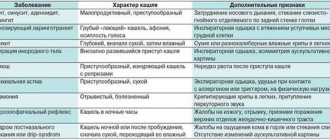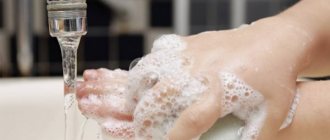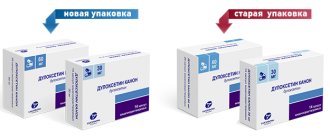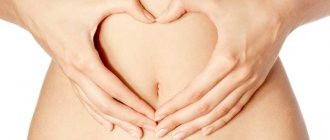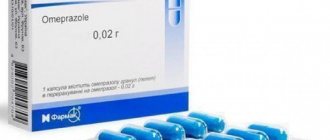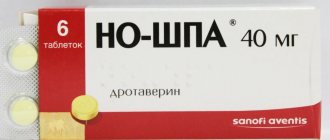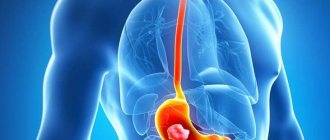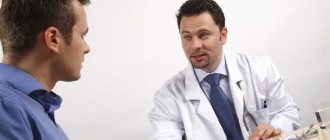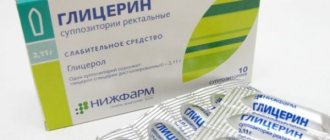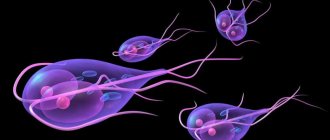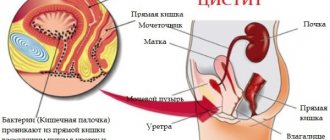Children are more likely to develop food poisoning. Their treatment must be taken seriously. Self-medication can be dangerous to the health of babies; all medications must be prescribed by a doctor. In this article, we looked at what to give a child in case of poisoning at the stage of providing first aid, cases in which you should urgently seek medical treatment.
Main signs of poisoning in children
Symptoms are determined by the amount of toxin and the state of the body's defense systems.
In mild cases, signs of poisoning include lethargy, apathy, and refusal to eat. With a moderate degree, an acute picture of intoxication is formed:
- Chills;
- Vomit;
- Loose stools;
- Temperature increase;
- Remains of undigested food in the stool with mucus and blood.
Manifestations appear gradually. Difficulties in differential diagnosis with multiple diseases in mild cases do not allow timely seeking medical help.
In case of weakness, apathy, or intestinal disorders, we recommend assessing the condition of the stool. When pathological changes are detected, qualified diagnostics is required. If the urine has physiological consistency, the absence of foreign impurities, and the physiological color of the urine, the diagnosis of food or chemical poisoning is questionable.
The danger of dehydration in a child is provoked by severe diarrhea and frequent vomiting. The condition leads to dangerous consequences.
When to see a doctor
Seeing a doctor is a mandatory step in case of poisoning in children, regardless of the severity of the condition. There are situations in which independent intervention is unacceptable, and the baby needs emergency medical care:
- if a baby is poisoned;
- there is severe vomiting or diarrhea;
- blood is visible in the stool or vomit;
- the baby has a fever;
- other severe symptoms are present (dermatitis, disorientation);
- the baby is unconscious;
- there are suspicions of poisoning with acid, alkali, medications, toxic vapors or gases;
- the patient's condition is rapidly deteriorating.
In certain cases, treatment with home methods is pointless and can aggravate the patient’s condition and lead to irreversible consequences. Parents should understand that the use of folk remedies is unacceptable, and attempts to treat their child on their own are dangerous for his life.
With the exception of first aid, other therapeutic measures are permissible only after a diagnostic study has been carried out to identify the causes of intoxication. Medications or any other means of therapy can be given only with the approval of a doctor.
Poisoning in a child: vomiting without diarrhea
Intestinal intoxications are divided into the following categories:
- Household;
- Skin;
- Inhalation;
- Percutaneous;
- Cavitary (introduction of toxins into the ear canal, vagina, rectum).
Household poisoning (food, water) is characterized by disruption of the gastrointestinal tract followed by gastroenteritis. Inflammation of the wall of the stomach and intestines leads to disruption of the digestion of food complexes. The formation of toxins due to the presence of toxic substances and spoiled food leads to increased intestinal irritation, which causes abdominal pain. In such a situation, parents try to give the child an anesthetic drug. Its effectiveness is short-lived. After the cessation of the therapeutic effect of the drug, the pain syndrome intensifies.
Attention! Analgin should not be given to children. The drug is prohibited for use in European countries due to the increased likelihood of causing irreversible changes in the brain and blood circulation.
Vomiting without diarrhea is a sign of damage to the wall of the upper gastrointestinal tract. After poisoning with a small amount of aggressive chemical compounds or drinking industrial alcohol, the epithelium of the esophagus and stomach dies. Reflex stimulation of receptors leads to a gag reflex.
Poisoning in a child is divided into 2 categories according to severity:
The acute form is characterized by a rapid onset and the appearance of specific symptoms.
Chronic intoxication gradually progresses. Symptoms intensify as the concentration of the toxin increases. This type includes alcohol and drug poisoning.
Scientists have been able to isolate more than 500 poisons that have tropism for human tissue. Literary sources describe attempts to systematize toxins according to their effects on specific organs. This gradation is not widely used.
What are the most common causes of childhood poisoning?
There are many factors and reasons that can lead to poisoning in a child. It is worth noting that parental inattention and insufficient child supervision are the main causes of childhood poisoning. Left unattended medications, detergents, expired food - all this is dangerous for the baby.
The main causes of poisoning in children:
- Eating expired and improperly prepared food leads to foodborne illnesses. The child may become infected with salmonellosis, dysentery or E. coli;
- the child taking medications or chemicals found at home. The baby wants to taste everything he sees around him. He mistakes brightly colored tablets for candy, and floor cleaner for a sweet drink;
- mushroom poisoning. According to the dietary recommendations of pediatricians, mushrooms are prohibited for children under 12 years of age. But many parents begin to feed their offspring with them from an early age. The child's digestive system cannot digest mushroom proteins. A baby can be poisoned even by edible high-quality mushrooms;
- the child’s failure to comply with basic personal hygiene. Through dirty hands he can become infected with an intestinal infection.
What to do
For any type of poisoning, a treatment algorithm is selected, consisting of the following procedures:
- Prevention of subsequent absorption of poison;
- Increased release of toxin from the body;
- Purgation;
- Antidote therapy;
- Symptomatic treatment (restoration of liver and kidney function).
The high prevalence of household intoxications is aggravated by the severity of disease progression. Mild poisoning in a child can be treated at home under the supervision of a pediatrician. Treatment of moderate and severe intoxication syndrome is carried out on an inpatient basis.
For any type of household poisoning in children, first aid is provided by people around them without professional medical education. In such a situation, the relevant question for parents is what should they give their child? The answer is complex and depends on many related factors.
In most cases, general recommendations for food intoxication are suitable:
- Rinse the stomach with a weak saline solution, baking soda, potassium permanganate;
- Induce vomiting;
- Give an adsorbent (enterosgel, activated carbon, polysorb);
- Take laxatives to speed up the elimination of toxins.
Attention! The use of emetics is prohibited for children under 5 years of age. In the presence of severe intoxication, medications can provoke repeated poisoning with alkalis and acids. Stimulation of vomiting is achieved in the classical way - by pressing the fingertips on the root of the tongue.
The use of a gastric tube for lavage at home is permitted. Before the procedure, you just need to give the person ipecac syrup (1%), which is difficult to find in a home medicine cabinet. To prevent vomiting, apomorphine solution can be used, but it is administered parenterally, which is psychological trauma for the child.
Intestinal sorbents absorb toxic substances, are excreted in feces, and are not absorbed into the blood. In case of poisoning, 4 properties of drugs are used:
The most common method of using sorbents is oral use.
4 categories of enterosorbents have been developed that can be given to a child:
- Group 1 – based on natural materials – activated carbon;
- Group 2 – synthetic drugs;
- Group 3, 4 – fibrous tablets.
The most popular representative of sorbents is activated carbon. For treatment, 8-10 tablets are used at a time. For the correct dosage, you need to calculate 1 tablet per 10 kilograms of weight. The product is suitable for children.
Toxins that are effectively absorbed by activated carbon:
- Glycosides;
- Alkaloids;
- Sleeping pills;
- Barbiturates;
- Salts of heavy metals;
- Herbal products;
- Sulfonamides;
- Phenol;
- Hydrocyanic acid.
Low efficiency of activated carbon is observed after poisoning with alkalis and acids.
To quickly remove toxins from the gastrointestinal tract, a number of important principles must be followed:
- If there is food inside the stomach, the concentration of the drug increases. Remains of food particles are absorbed by activated carbon, which reduces the filtration capacity for toxins;
- Lack of activated carbon inside the gastrointestinal tract leads to the reabsorption of poisons;
- Taking other medications together with activated carbon leads to a decrease in the effectiveness of the latter.
The drug is used not only at the first aid stage. Throughout the entire recovery period, a total dose of at least 20 grams (over 80 tablets) is prescribed.
The patient's condition is monitored during therapy. Possible side effects when taking the medicine:
White coal is the latest generation sorbent, which is associated with a high price. The active substance is silicon. The composition of the drug includes glucose to increase the absorption of toxins, enhance the hydrolysis of proteins, increase the transit of nutrients in the small intestine, stimulate the motility of the gastrointestinal tract, the formation of stones, and enhance the hypoglycemic effect.
White coal is characterized by a high sorption capacity (over 400 m2 per gram). The daily dose of the drug is about 4 grams, which is 10-16 tablets. The higher price of white carbon when compared with activated carbon is justified by the reduced dosages when taken. The tablets do not require preliminary chewing or crushing.
White coal stimulates the motility of the gastrointestinal tract and helps quickly cleanse the body of microcrystalline cellulose.
General recommendations for a speedy recovery
Parents must remember that in case of poisoning, under no circumstances should they give their child painkillers, dairy products, or soda.
Necessary:
- Drink plenty of water.
- Wash food thoroughly.
- Feed only fresh and high-quality food.
- Monitor the expiration date of products.
- Always have the necessary medications in your first aid kit.
For a few more days after all the symptoms subside, the baby needs to be kept on a diet . Cook dairy-free porridge, include crackers and strong tea in your diet. A nursing mother should limit her food intake, and buy a lactose-free, hypoallergenic formula for a formula-fed baby.
Protect yourself and children from food poisoning. Be healthy!
Children are more likely to develop food poisoning. Their treatment must be taken seriously. Self-medication can be dangerous to the health of babies; all medications must be prescribed by a doctor. In this article, we looked at what to give a child in case of poisoning at the stage of providing first aid, cases in which you should urgently seek medical treatment.
What to feed children with food poisoning
The issue deserves detailed consideration. The acute phase of the disease is characterized by high fever, lack of appetite, and severe damage to the renal-hepatic complex.
At home, you cannot give your child any drug other than sorbents. Without assessing the severity of pathological changes, the state of protective complexes, and studying complications, it is difficult for a qualified doctor to choose the optimal remedy. At home, parents can only give their child to eat properly.
You should not give milk, as it promotes fermentation in the gastrointestinal tract; avoid fruits and vegetables, which are a source of increased irritation of the gastrointestinal tract.
You should follow a diet for 2 weeks after poisoning. Fatty foods are excluded from the diet. Food is steamed. You need to eat in small portions, but no more than 8 times a day. After eliminating the poisoning, a detailed diet must be followed for two weeks. Then the diet expands. Tea with crackers without sugar is replaced by a sweet drink.
Medicines for poisoning
It is advisable to take simple activated carbon immediately after symptoms appear, or immediately after you discover that a bad substance has entered the baby’s mouth. If toxins do not have time to enter the bloodstream, the consequences will be easier.
If signs of poisoning and vomiting persist for up to three days, you should contact your pediatrician. Treatment is based on intestinal antibiotics and anti-diarrhea medications.
You should not prescribe drugs from this group on your own, as they have a strong effect on the body and should be selected in accordance with the cause of intoxication and the individual characteristics of the child.
Most often, antibiotics are prescribed for the diagnosis of salmonellosis and dysentery.
For botulism, treatment also includes a group of targeted antibiotics. A child aged 3 years or earlier needs to call an ambulance if the temperature rises to 38 or higher.
It is dangerous to take risks by prescribing medications to your child based on your own opinion. This is an unnecessary risk. At best, the medicine will not work, and at worst, it will only enhance the negative picture of the course of poisoning. Among the medications that can be given independently to reduce diarrhea if a child is poisoned are “Enterofuril”, “Loperamide”.
After the main symptoms, vomiting, fever, weakness and diarrhea, have subsided, you can start giving probiotics. They play an important role in restoring the intestinal flora after a shock in the form of poisoning.
With probiotics, the child will return to normal faster, the body’s natural protective functions will be activated and will help to recover faster. Probiotics are prescribed by doctors as an aid during recovery. They can be extended if necessary for a preventive period.
In case of poisoning, you need to create a correct diet. You can’t give flour, sweet and spicy foods. Sweet fruit juices and dairy products are prohibited in case of poisoning.
What to feed children after poisoning
The child's diet is as strict as possible. According to most doctors, during the first days it is better to refuse food altogether, but drink a lot of water. On the second day, fractional meals are allowed - 5-6 times a day. Lenten broths, crackers with tea without sugar, and rice are allowed. Nutrition for food poisoning should be complete.
According to diet No. 5 according to Pevzner, the body will cope with intestinal problems faster and will recover faster with the intake of protein. Some nutritionists do not recommend its consumption due to increased stress on the stomach, but cells need proteins to restore membranes.
We recommend following the Pevzner diet after food intoxication. The following menu is allowed:
- Steamed cutlets made from minced meat;
- Vegetable puree;
- Minced fish;
- Baked cottage cheese – casseroles, soufflés, puddings;
- Crackers with tea (no sugar);
- Buckwheat, rice porridge on water;
- Baked, boiled fruits;
- A decoction of dill, rose hips, chamomile;
Treatment of fruit poisoning in a child should exclude the consumption of acidic foods. They irritate the gastric mucosa and increase gastric secretion. The condition aggravates gastric diseases (ulcers, gastritis). Against the background of intoxication syndrome, eating sour vegetables will exacerbate the condition.
Let's look at what a child can eat based on the Pevzner diet:
- Lenten biscuits;
- Vegetable soups with rice;
- Meatballs based on poultry meat;
- Boiled fish cutlets;
- Egg omelette (steamed);
- Fruit jelly.
Based on this menu, you can answer what to feed a child after poisoning: broths, fruits, steamed porridge.
- Sweet pies, cakes, fresh bread;
- Meat broths on bones;
- Milk soups;
- Boiled, smoked sausage;
- Canned food, fish, caviar;
- Oatmeal, pearl barley, millet;
- Fruits, raw vegetables;
- Yogurts, kefir, milk;
- Boiled eggs;
- Sweet or sour compotes.
The menu is adjusted by specialists after studying the signs of intoxication. If after poisoning the child vomits without diarrhea, the above diet is rational. If severe diarrhea occurs, bacterial gastroenteritis cannot be ruled out. The condition requires the prescription of antibacterial drugs. Nutrition is aimed at preventing exacerbation of inflammatory diseases of the gastrointestinal tract and correcting dysbiosis.
Medical treatment of poisoning in a child
Any diet for intestinal intoxication is ineffective without medical treatment.
Principles of first aid for poisoning:
- Lay the person on his side to prevent the tongue from retracting;
- Rinse the stomach;
- Restore patency of the respiratory tract;
- Perform venous puncture;
- Stimulate artificial respiration;
- Indirect cardiac massage;
- Call an ambulance.
While maintaining consciousness, reflex vomiting should be provoked by taking medications or pressing on the root of the tongue. Pressing your hand on the hypogastric region increases the effectiveness of the procedure. Children over 8 years old are allowed to consume table salt.
Contraindications for inducing vomiting:
- Lack of consciousness;
- Drop in blood pressure;
- Convulsions;
- Poisoning with irritants (atropine, phenol, turpentine);
- Hemorrhagic syndrome.
Activating the gag reflex is necessary to speed up the removal of toxins from the stomach. When poisons are removed, toxic substances are not absorbed, which prevents exacerbation of the disease.
Treatment of intoxication syndrome in the absence of consciousness;
- Maintaining patency of the respiratory tract;
- Artificial respiration;
- Indirect cardiac massage;
- Vein puncture;
- Relief of convulsive syndrome;
- Normalization of blood supply disorders;
- Tracheal intubation.
Qualified medical care for the patient does not exclude tube gastric lavage in the presence of drugs to relieve the gag reflex. In case of convulsive syndrome, lavage is performed after the administration of sedatives to relieve muscle tremors.
The thickness of the probe must correspond to the size of the esophagus. Washing is carried out with warm water. Its amount is proportional to age in concentration - 1 liter per year of life, but the total volume of water per day should not exceed 10 liters.
How to lower the temperature?
Help for a child with fever is provided with medications. It is not recommended to give antipyretics to children under 1 year of age, so if the temperature rises, you should call an ambulance. Ibuprofen, Paracetamol and other medications with similar composition are suitable for treating patients 12 months and older. Aspirin and Analgin are rarely given to children - the drugs have a negative effect on the child’s fragile body.
You can reduce your temperature with medication in the following cases:
- difficulty breathing, choking, or respiratory failure;
- severe loss of fluid;
- temperature from 39 °C and above;
- convulsions previously observed at elevated temperatures.
If the temperature does not exceed 38.5–39 °C, there is no need to bring it down. During hyperthermia, the body produces interferon to help fight the infection. To alleviate the patient’s condition, you can give cranberry juices, green tea with honey and other harmless drinks. Increased fluid intake will speed up the elimination of toxins and ensure rapid recovery of the body.
Principles of symptomatic treatment
Therapy of cardiovascular system disorders:
- Metabolic therapy;
- Correction of vascular tone;
- Cardiotrophic and cardiotonic therapy;
- Elimination of rhythm disturbances.
Principles of therapy for changes in the respiratory system after poisoning:
- Oxygen therapy – administration of pure oxygen;
- Ensuring free air flow;
- Elimination of bronchospasm;
- Ventilation;
- Preventing swelling.
Relief of neurological disorders:
- Restoring cerebral blood supply;
- Normalization of the respiratory and cardiovascular systems;
- Treatment of convulsive, hyperthermic syndrome;
- Use of antihypoxants.
To normalize the condition after poisoning in a child, the safest medications should be selected.
Correction of liver and kidney disorders:
- Elimination of renal failure;
- Detoxification therapy;
- Combating overhydration (dehydration);
- Introduction of antidotes.
In case of severe intoxication, the patient must be hospitalized in the intensive care unit. Multiple pathologies require qualified treatment with constant dynamic monitoring of the person’s condition.
Disorders of the gastrointestinal tract are more common in children under 3 years of age: the body’s internal systems and immune defense mechanisms are not yet perfect at this age. Poisoning from spoiled food, medicines or household chemicals poses a danger to health and life. The child’s body reacts to the effects of toxins faster, and the symptoms are more pronounced. If a child is poisoned, vomiting may occur half an hour after toxic substances enter the stomach.
Are antibiotics needed?
Antibiotics are rarely prescribed for poisoning in children. Indications for taking antibacterial drugs:
- campylobacteriosis;
- Klebsiella infection;
- poisoning caused by Proteus;
- cytobacteriosis and escherichiosis.
Before prescribing an antibiotic, the doctor must determine the causative agent - this will help select the appropriate medicine. It is prohibited to take antibacterial agents on an empty stomach. There are medications that need to be taken before meals.
When treating children with antibiotics, the following recommendations should be followed:
- take into account the doctor’s recommendations regarding dosages and duration of therapy;
- take the tablets only with water;
- during and/or after antibiotic therapy, take probiotics (medicines for the treatment of dysbiosis).
Taking the medication must be agreed with your doctor. Before giving the drug to a child, you need to read the instructions, study possible side effects, and make sure there are no contraindications.
Why does vomiting occur and how long does it last?
Nausea and the gag reflex are protective reactions of the body, with the help of which the stomach tries to cleanse itself of exotoxins. Uncontrollable repeated vomiting in case of poisoning causes a violation of the water-electrolyte balance in a child.
The younger the child’s age and body weight, the more dangerous dehydration is for the child’s body. Vomiting more than 3 times a day is an alarming symptom. In case of severe poisoning, vomiting becomes more frequent up to 10–12 times a day, and the symptoms of dehydration increase. Pallor and dryness of the skin are observed, blood pressure drops sharply, and acidosis develops. The described condition is a threat to the child’s life.
Features of the child's body
Poisoning in a child is more severe than in an adult. This is explained by the peculiarities of the development and structure of the child’s body. Below are the main factors that contribute to the occurrence of poisoning in children.
- Full production of saliva appears only at one year of age. Until this time, the baby is not protected by lysozyme, a protein that neutralizes some bacteria and protects against infections.
- Insufficient development of the immune system, which is necessary to protect the body from pathogenic microorganisms. Only at 3 years old does the child’s immunity begin to fully function.
- Intestinal microflora provides local immunity and protects against some intestinal infections. A baby is born with a sterile intestine, which fills with beneficial and essential bacteria during the first year of life. Already at 2 years old, children's intestinal microflora does not differ from adults.
- The acidity of gastric juice in children is lower, as a result of which the stomach is not fully protected from intestinal viruses and bacteria.
How to distinguish from rotavirus
Some symptoms of rotavirus infection in children are similar to those of food poisoning (weakness, nausea, stomach pain, vomiting, severe diarrhea). The differences are the viral nature of the pathology and the method of transmission of the infection (from a sick person or carrier).
Infection with rotavirus occurs through household contact, airborne droplets or fecal-oral routes.
Rotavirus infection is characterized by:
- seasonality of incidence (spring and autumn-winter period);
- the presence of catarrhal symptoms (redness of the conjunctiva of the eyes, nasal congestion, sore throat, coughing);
- hyperthermia for several days;
- moderate abdominal pain;
- spread of viral infection in children's groups.
Foodborne illnesses are distinguished by other characteristics:
- poisoning is more common in the summer (favorable conditions for the growth of bacteria);
- there is a direct connection between the intake of spoiled food and the deterioration of the general condition;
- Only people who have consumed a low-quality product get sick;
- an increase in body temperature to 38 °C or higher is short-lived;
- severe cramping pain in the stomach and small intestines.
First aid
If no more than an hour has passed after taking a dangerous product, you can rinse your stomach to prevent further absorption of toxins. The child is given 1–2 glasses of boiled water at room temperature to drink, then artificial vomiting is induced by lightly pressing on the root of the tongue with two fingers or the handle of a spoon. The child should be in an upright position, sitting with a slight lean forward.
If it is impossible to induce vomiting, sorbents are used, observing the age-specific dosage:
- activated carbon (children over 3 years old, 4–5 crushed tablets in a small volume of water);
- Enterosgel (for children under 1 year of age it is recommended to first dissolve it in water);
- Smecta (in the form of a diluted powder or suspension);
- Polysorb (powder diluted according to instructions).
Adsorbent substances are used to cleanse the intestines in the form of an enema. A packet of Smecta can be diluted in the required volume of cool water (warm water should not be used - the liquid is quickly absorbed in the rectum). For a child 1–2 years old, it is enough to administer 50–70 ml, 3 years old - 150 ml, 4 years old - 200 ml of solution.
To provide emergency care, you should always store sorbents and probiotics in a home first aid kit; prepare a solution of baking soda, salt, or a slightly pink solution of potassium permanganate for gastric lavage at home.
It is necessary to combat dehydration - give the child a drink. Do not give liquid in glasses, which provokes a gag reflex. You should drink water frequently, 1–2 tsp. every 5 minutes. If desired, add a little juice to the water (no more than a third). The use of rehydration solutions - Regidron or Oralit - is effective. You can replace Regidron with a homemade solution: 1 tsp. baking soda, 1 tsp. salt and 2 tbsp. l. sugar per liter of chilled boiled water.
Antiemetics should not be given unless prescribed by a specialist. The doctor takes into account the patient’s condition, contraindications and the likelihood of adverse reactions of the drug.
Basics of first aid for childhood poisoning
What to give to a child in case of poisoning and vomiting before the ambulance arrives? Please note that at this stage it is very important not to harm the baby with your attempts to save him. Below is a description of what medications you can give your baby in case of food poisoning and how to help your child while waiting for doctors.
Rest and routine
Provide your baby with peace. Don’t panic, and especially don’t scold him if he is to blame for the development of the disease. Put the child in bed, open a window in the room to get fresh air.
Don't try to feed the baby. Dietary food will be prescribed by the doctor after first aid.
Gastric lavage
Cleansing the stomach will help remove the remains of poor-quality food, bacteria and toxins from it. With its help, you can prevent the deterioration of the patient's condition.
If your child is over 5 years old, perform a self-gastric lavage. To do this, let him drink several glasses of plain water in one gulp and try to provoke him to vomit.
Remember that rinsing the stomach is prohibited in case of poisoning with acids, alkalis, or when bloody vomiting occurs.
Enema
Cleansing the intestines will help remove pathogenic microorganisms and toxins from it and reduce intoxication. The enema should be done using plain boiled water. Its temperature should be room temperature. The enema is done with clean intestinal rinses. Adding any medications or herbal decoctions to an enema is prohibited at home.
Sorbents
Sorbents are medications that can be taken before doctors arrive. Their dosage can be calculated according to the weight or age of the child. For example, a 4-year-old child weighs about 20 kg. 1 tablet of Activated Carbon is designed for 10 kg, and a baby weighing 20 kg should be given two tablets.
Please note that the dosage of sorbents with different names differs from each other. Before giving them to your baby, read the instructions carefully. It is also necessary to check the expiration date of medications. Expired tablets can lead to poisoning.
List of sorbent names:
- Activated carbon;
- enterosgel;
- sorbex;
- smecta;
- atoxyl.
Drink plenty of fluids
What can a poisoned child drink? Before the doctors arrive, you can give your child mineral or alkaline water without gases. Hot and cold drinks are contraindicated.
What to do if a child drinks acid or alkali
In case of such poisoning, you should not rinse the stomach or induce vomiting in the baby. Gastric lavage is performed by doctors through a tube. This is the only way to safely get rid of the chemical without causing repeated burns to the mucous membrane of the esophagus and oral cavity.
Before the doctors arrive, give your baby some plain water to drink, put him in bed and put ice on his stomach.
Remember that you should not try to neutralize the contents of the stomach. Many people believe that if you are poisoned by acid, you just need to drink alkali. During the neutralization reaction, a large amount of gases are formed that can rupture the stomach from the inside.
Treatment
Therapeutic measures should be carried out under the supervision of a pediatrician. In severe cases, urgent hospitalization is necessary. Antibiotics are often used to treat bacterial infections (salmonellosis or dysentery); a course of sorbents is sometimes prescribed for the entire recovery period. The doctor may prescribe antiemetic and antidiarrheal medications and rehydration solutions. In a hospital setting they are administered intravenously. Detoxification allows you to quickly alleviate the serious condition of the patient.
Diet is an important part of the rehabilitation process. On the first day, the child must fast. An exception is infants; breastfeeding on demand is not cancelled.
When the child's condition improves, you can give vegetable puree without oil, white bread croutons, vegetable broth and unsweetened tea. The food should be ground, the serving size should be 50–100 ml. Dishes need to be steamed, boiled or stewed.
On days 3–4, porridge (rice, oatmeal, buckwheat) with water, baked apple puree, low-fat cottage cheese or kefir is gradually introduced. Milk is more difficult to digest and provokes fermentation processes in the intestines.
Dietary meat (rabbit, turkey or chicken fillet) and fish (cod, hake or pollock without skin) can be given for 5–6 days.
The optimal number of meals is 5-6 times a day, but no more than 8; the intervals between meals ensure complete processing of food by enzymes and an even load on the digestive tract.
To normalize the functioning of the gastrointestinal tract, probiotics are prescribed:
- Bifidumbacterin;
- Lactobacterin;
- Colibacterin;
- Bactisporin (or others as recommended by a doctor).
What not to do
Particular attention should be paid to children under 3 years of age - treatment for stomach and intestinal disorders should not be started without a doctor’s recommendation.
Gastric lavage is not done for children under 6 years of age - in a small child, aspiration of the respiratory tract with vomit is possible.
It is forbidden to self-administer antiemetic and antidiarrheal drugs. Antibiotics should not be given until the diagnosis is determined. Long-term use of adsorbents is sometimes contraindicated.
Prevention of food poisoning
Compliance with sanitary rules minimizes the risk of food poisoning:
- For cooking you need to use only fresh products.
- To store prepared meals in the refrigerator, it is better to allocate a separate shelf.
- Dishes containing food should be tightly covered with a lid or cling film.
- Raw meat or fish is cut with a special knife on a separate board, hands are washed with soap and water before and after cooking.
- It is recommended to wash vegetables and eggs before putting them in the refrigerator.
Young children should not be left without adult supervision, and older children should be reminded about personal hygiene.
Poisoning in a child, vomiting with diarrhea and fever are explained by the slight susceptibility of the child’s body to poisons. In case of severe dysfunction, timely assistance prevents respiratory arrest, circulatory disorders, and helps to avoid death.
Vomiting due to poisoning in a child (reasons)
To protect their child, parents need to know what can poison them. Determining the circumstances of the poisoning makes it possible to provide assistance before specialists arrive. The most common causes of vomiting are:
- Food products contain pathogenic microflora toxins.
- The food eaten is incompatible (leads to the formation of toxic substances).
- Unusual foods and new cooking technologies cause a negative reaction from the digestive organs.
- Chemical poisoning (drugs, mercury vapor, alcohol, household gas) upsets the functioning of the central nervous system and disrupts the normal functioning of digestion.
Carcinogens, heavy metals, toxic waste products of pathogenic microflora disrupt metabolism and irritate the gastric mucosa. A rapid increase in the concentration of irritating factors causes the need to evacuate the contents of the stomach, and convulsive contraction of smooth muscles occurs.
Diagnosis of poisoning and accompanying symptoms
The first signs of pathology are not obvious; it is often diagnosed when assessing the general condition. Poisoning in a child, vomiting is accompanied by the following symptoms:
- weakness;
- temperature increase;
- nagging pain in the stomach and intestines;
- labored breathing;
- diarrhea;
- particles of undigested food in feces and vomit;
- increased sweating.
Symptoms of food poisoning in a child with vomiting can develop quickly, causing further loss of energy and posing a threat to life.
Symptoms
Before starting treatment of poisoning, it is necessary to study the features of the development of the pathological process. Once in the gastrointestinal tract, pathogenic bacteria begin to multiply rapidly. During their life, toxins are formed that settle on the walls of the intestines and stomach. Over time, bacteria that have entered the body die and are destroyed, causing even greater poisoning. When toxic substances enter the blood, general intoxication develops.
You can tell if your child is sick by the following symptoms:
- disorders of the gastrointestinal tract (abdominal pain, nausea, vomiting, diarrhea, increased gas formation);
- headache;
- increased body temperature;
- increased heart rate and breathing;
- joint and muscle pain.
Indications for contacting a medical institution
Child poisoning and vomiting may appear suddenly. If the disorder is mild, then the use of the sorbent may soon stop the negative effects.
But often severe intestinal infections with fever and vomiting require qualified medical care and treatment in a hospital setting, especially if the child is small.
- bloody inclusions in vomit and feces;
- confusion, loss of coordination, fainting;
- traces of burns on the oral mucosa;
- respiratory and cardiac dysfunction, threatening cardiac arrest;
- severe muscle spasms;
- loss of vision.
It is important to understand that self-treatment in the development of a severe form can cause irreparable harm, so the child should not be given any medications until emergency assistance arrives. You need to try to remove vomit from the child’s mouth.
For laboratory analysis, it is necessary to save samples of the contents of the stomach and intestines (if vomiting is accompanied by diarrhea).
Recovery
Due to severe diarrhea or vomiting, the baby's body becomes dehydrated. Therefore, when deciding what medicine to give to their beloved child in case of child poisoning, parents are advised to pay attention to several drugs that restore the water-salt balance.
With the help of "Regidron" you can stop vomiting and diarrhea. It is recommended to take the drug until the body’s functions are completely restored.
"Glucosolan" contains only a salt mixture and glucose. This product is great for helping with dehydration.
Treatment of poisoning at home
Having determined the cause of vomiting with fever, the child can be treated at home if there are no other severe disorders. In case of food poisoning, first of all, you need to clean and rinse the stomach, causing additional vomiting using solutions of baking soda or potassium permanganate. Then it is necessary to compensate for the loss of water by the body in order to speed up the elimination of poisons and avoid kidney damage. To do this, you must often give the child to drink purified water in small portions (1 tsp each) so that it has time to be well absorbed.
You can give an infusion of chamomile or rice decoction; it envelops the walls of the stomach, prevents further injury to the mucous membrane, and gently removes toxins. Regidron solution will help restore the disturbed acid-base balance.
To lower the temperature, it is best to use suppositories so as not to cause additional pain in the stomach. It can be:
The complex of therapeutic measures includes complete refusal of food on the first day after poisoning and gentle nutrition in the future (fried, sour, salty, fatty foods, fresh fruits and vegetables, bakery and confectionery products must be excluded). During the recovery period, the child is given probiotics (for example, Bifidumbacterin or Linex) to restore beneficial intestinal microflora. After impaired digestion, you need to restore enzymatic activity with Pancreatin or Mezim Forte.
Sorbents
During the process of intoxication, the baby’s body suffers from toxins that gradually begin to be absorbed into the blood, which can provoke numerous intraorganic abnormalities. To prevent this, it is recommended to purchase medicine for children against sorbent poisoning. Such means include:
- "Enterosgel". This is a paste for oral administration that has a gentle effect on the mucous surfaces of the intestines. In addition, this composition envelops the walls of the young stomach, due to which the pain syndrome is significantly reduced.
- "Polyphepan". This is another natural remedy. It is made of wood. This medicine for children against poisoning is very effective. It removes toxins well and also protects the baby’s body from strong chemical irritants.
- "Smecta". This adsorbent is completely natural. If you give the product to a baby, then polyvalent compounds are formed in his body, including mucus, thanks to which the removal of toxins will be carried out much faster.
If we are talking about anti-poisoning medications for children over one year of age, then drugs of this type are considered the best. They can be given to babies earlier if dosage recommendations are strictly followed. For example, if we are talking about a baby, then one sachet of Smecta per day is enough for him.
Prevention of poisoning in children
To prevent your baby from getting poisoned, it is recommended to follow simple rules:
- Before preparing food, thoroughly wash your hands, vegetables and fruits. You need to teach your child to wash their hands after using the toilet or going for a walk.
- Kitchen equipment is regularly treated with disinfectants.
- For preparation, we use only high-quality products with a current shelf life, familiar raw materials and proven technologies. The duration of heat treatment of meat and fish products must be sufficient.
- Ready-made dishes cannot be stored for a long time; it is unacceptable to use non-food containers for storing food.
Before cooking, it is better to soak vegetables for 3 hours, this reduces the risk of poisoning by pesticides and nitrates.
Medicines, mercury thermometers, and household chemicals should be stored in places inaccessible to children. You cannot use expired medications for treatment.
No toxic substances should be stored in the house (for example, ethyl and methyl alcohols, items containing heavy metals), and no trash should be left behind. It is important to monitor the health of the heating system to prevent gas poisoning. You should be picky when choosing children's toys and clothes: anything that has a strong chemical smell can contain toxins and cause severe vomiting.
